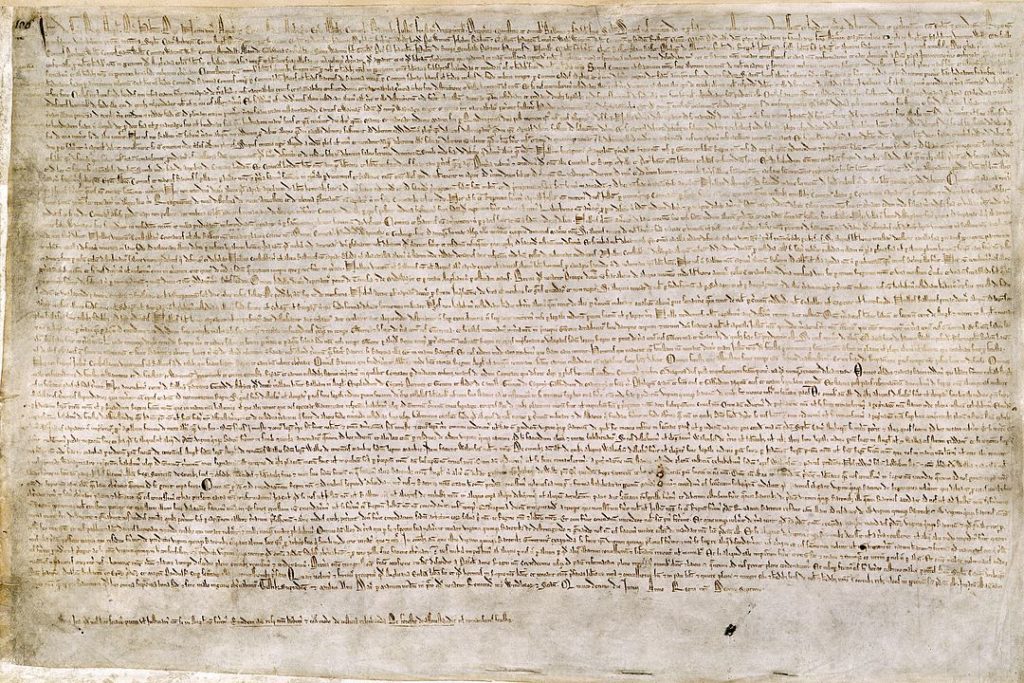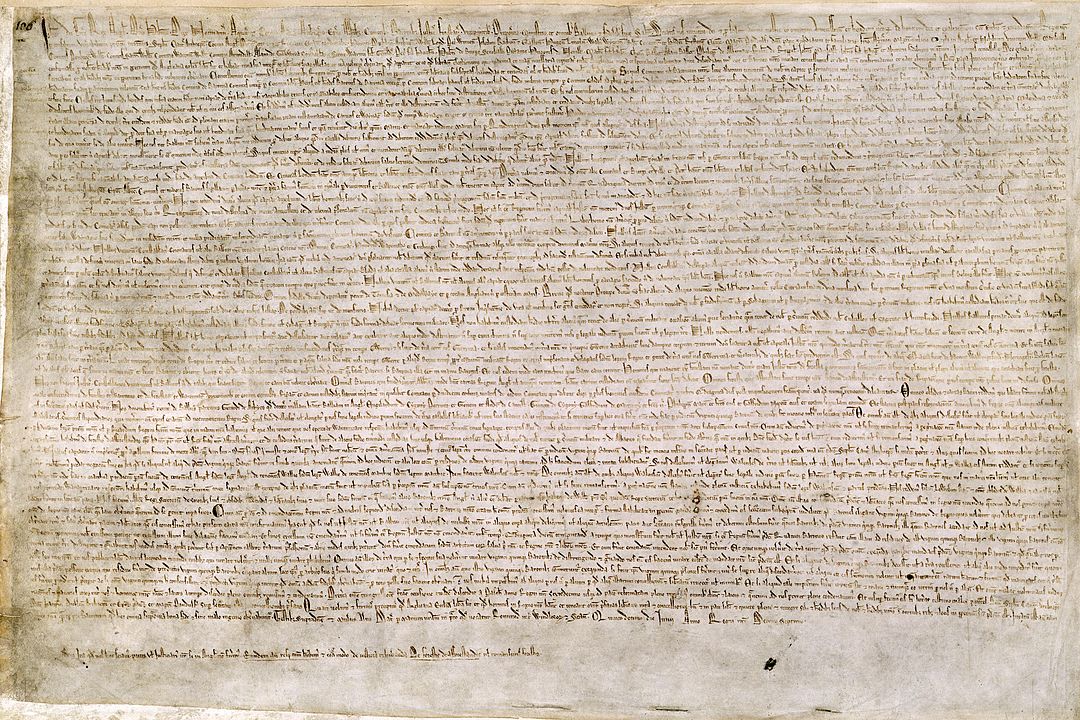
I learned this today. Vellum is a material for writing on that is made from prepared animal skin.
The document on the front of this article is the Magna Carta. It is the document that tried to control King John of England and is one of the most famous documents in the UK. It was written in Latin and on vellum.
Before paper was invented and readily available, people used different things to write on. Over the millennia since writing was invented, different cultures have used stone tablets, wax tablets, metal sheets, wood, papyrus, parchment, and its finer cousin vellum.
Parchment is made from the skin of an animal that has been prepared for writing. It is usually calf, goat, or sheep skin. Vellum is only made from calfskin and is of a higher quality than parchment. The word vellum comes from the Old French vélin, which meant calfskin.
Parchment has existed for thousands of years. There is evidence that it was in use in Egypt in 2550 BC, although the earliest surviving pieces of parchment are from 2400 BC. The parchment was quite often rolled into scrolls because it made storage easier.
The word parchment comes from the Latin pergamenum and the French parchemin. These words come from the city of Pergamon, which was a Greek city that produced a huge amount of the civilized world’s parchment during the Hellenistic period.
Vellum is a finer and more expensive form of parchment. It is made only from calfskin and was a prized possession. It was made by washing the skin of the calf. The younger the calf, the better, apparently. The rarest vellum was called uterine vellum and was taken from a calf fetus or stillborn calf.
The skin is washed with water and the calcium hydroxide, also known as lime. It is soaked in the lime for a few days because it softens the skin and removes the hair. It also cleans the skin and gets rid of blood and anything else that might be stuck to it. This is basically the same way that any leather is produced.
After it has been washed, the rest of the hair is scraped off and the skin is hung to dry. It is hung on a frame and cords are used to tie it on. The craftsman has to be careful that the skin doesn’t tear. The skins are dried in this way because if they dry under tension, the collagen in them sets and lets them keep their shape when they are untied. Also, the fibers in them become aligned, making it smoother to write on.
After the skin is completely dry, it is cleaned again. Then a knife is used to scrape off any remaining hair. Scraping can also make the skin thinner. The vellum was then treated with powders and pastes to make it smoother, remove grease, and make it whiter.
Once the skin was untied, it was cut into the required shape. An average calfskin could make three and a half pages of vellum. That means, if Harry Potter and the Order of the Phoenix had been written on vellum, it would have needed 219 calfskins. And that is just for one copy.
Vellum was often used for scrolls, but the ink doesn’t soak into the skin and would crack and flake off over time. Bookbinding became the way to go because many pages of vellum could be combined in a book or a codex. The problem was that the vellum and all parchments, were very affected by the environment. Changes in humidity could make the pages buckle. In order to prevent this, the vellum was bound in books with very stiff wooden covers and straps and buckles to keep them shut.
Once paper reached Europe in the 11th century, vellum started to go out of favor. It was more expensive and more difficult to keep than paper. The invention of the printing press only sped this decline up. It is much more practical to print onto paper than it is onto vellum. As well as this, the idea behind the printing press was the mass production of knowledge, and vellum and parchment couldn’t be produced in large enough quantities to keep up. That being said, some of the first Guttenberg Bibles were printed on vellum. People still associated vellum with quality. By the 16th century, vellum had pretty much disappeared.
Vellum has recently made something of a comeback. There are artists who prefer to paint on vellum because it feels different and makes their work appear different. I don’t think there is any danger of paper being overthrown, though.
So, vellum is a writing material made from the skin of a calf. You can only make three and a half pages out of one calf, so it is not a very practical system. But, that is said with hindsight. At the time, in fact for thousands of years, vellum and parchment did the job they were needed for exceptionally well. And this is what I learned today.
Photo by the British Library from its digital collections
https://commons.wikimedia.org/w/index.php?curid=78606
Sources:
http://www.edenworkshops.com/Vellum_&_Parchment.html
https://en.wikipedia.org/wiki/Vellum
https://en.wikipedia.org/wiki/Parchment
https://en.wikipedia.org/wiki/Pergamon
https://en.wikipedia.org/wiki/Magna_Carta
https://www.archives.gov/preservation/formats/paper-vellum.html
http://www.historyofpaper.net/paper-history/history-of-vellum/
https://apps.lib.umich.edu/papyrus-collection/ancient-writing-materials
https://en.wikipedia.org/wiki/History_of_writing
https://en.wikipedia.org/wiki/History_of_paper

